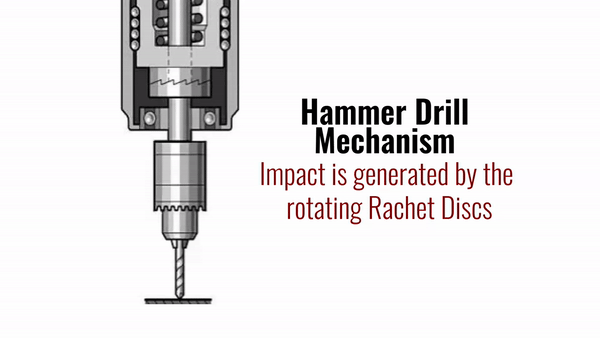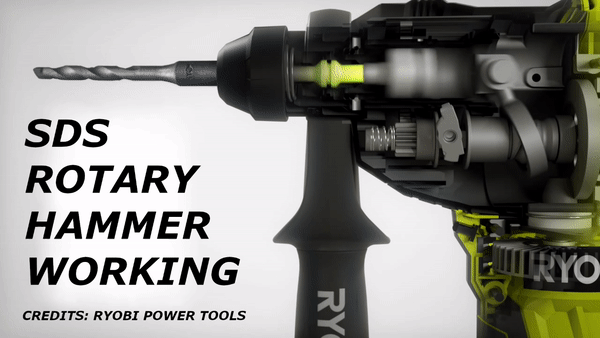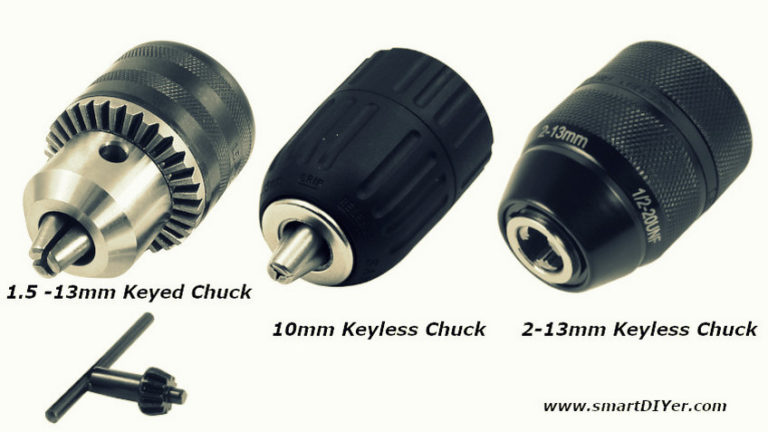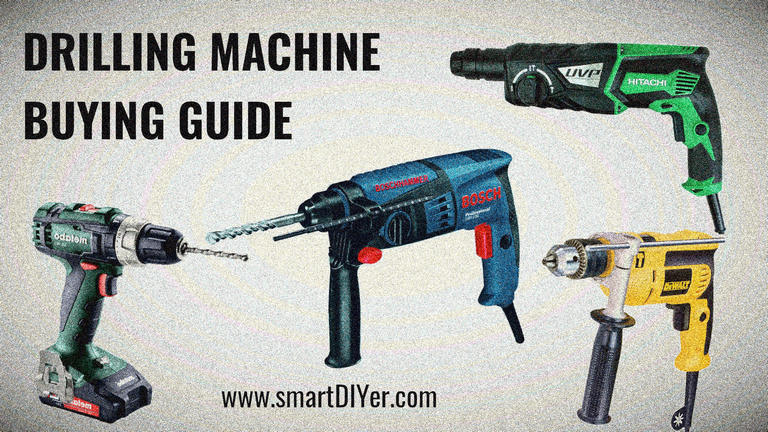When you have decided to fix the job yourself, at some point you might look for a low cost drill. When you start your research, you will come across various options, like the corded, cordless, impact, hammer, keyless chuck, sds, etc. If these terms are confusing, let me make this clear in this article.
By reading this article, you will gain enough knowledge about drills, their types and finally the one to choose for your job.
Low cost drills operate up to 10 / 13 mm chuck capacity i.e Drill Bit diameter it supports. Their power varies from 400 to 600 watts. Always remember, more the power, stronger it will be. Cheaper drills don’t get a reversible motor. That means, it will only rotate clockwise (forward only). Average low cost drills get hammer/ impact function. Please do not get confused. It is not true hammer or true impact. It’s just a cheaper alternative for hammer function.
Pro Tip: Always buy Reversible Drills
Drill Choice For Woodworking, Metalworking and Masonry
Woodworkers Perspective
If you are a woodworker, 10 mm chuck serves just fine. Most of the accessories like Forstner Bits, Hole Saws and Flat bits / Spade bits have a shank diameter about 8-10 mm.
All drilling machines can drive screws into wood with less effort. But the operator cannot control its speed. If you think you can control speed using its trigger switch by engaging it slowly, then you will lose driving torque. This means, drilling machines create a specific torque only at specific RPMs. High wattage drilling machines can produce low end torques suitable wood drilling. So, better buy any drill above 500 watts of power so that you have good amount of initial torque to drive screws.
If you are specifically into woodworking, and drive a lot of screws, please don’t buy a drilling machine, invest for an impact driver. They produce enough low end torque, which helps the operator to precisely control the torque while driving screws. They also don’t break the screw in half as they supply constant torque to the screw, which is not the case in drilling machines, thus saving your time patching up the hole and finding a new one.
Tip: Never drive screws directly into hardwood without drilling it first, as hardwoods are brittle.
The design of any corded drill is meant for both hand use because of the heavy front motor. For single hand use wood work, cordless drills are recommended as they are designed for single hand use and are versatile.
Metalworkers Perspective
For a Metalworker, any drill does the job. Whether you need 10 mm or 13 mm is all up to you. You never need an impact action or hammer action on metal. But you need a drill strong enough to drill the hardest metals. 500W is minimum recommendation for Hand Held use.
Remember that Drill Bits are rated for some specific RPMs. As the size increases, less and less RPM should be supplied. Also, it’s not that easy to constantly maintain your drilling position without moving the machine or the work-piece while working on places like rooftops, ladders etc.
Less RPM operated large bits tend to lock up while drilling hollow metals like Pipes, Tubes etc. While drilling hollow tubes, it is easy to pass through first face, drilling second face needs more stability. If both holes are not in alignment, the top flutes of the drill bit will lock with the top surface causing bit shatter. Drilling solid metals is probably not an issue with hand held drills. But the operator needs to apply more energy to make the bit bite deep into metal. This creates strain in operators arms. This is where everyone finds a pillar drill more practical than hand drills in fabrication industry.
For Construction worker
For Masonry or Concrete work, Hammer function is most what you need. The low cost rotary drill provides an impact action which work like a mini hammer. But that’s not real hammer action. This Hammer Kind of action on Low cost drills is not effective as Real Hammers. But when you need a drill that does the masonry job every fortnight use, go with this impact action. Trust me, it may consume more time, but will complete the job.

Real hammer drills operate with SDS (Slotted Drive System) drill bits. These are rotary hammers. Some rotary hammer drills also have a Hammer Only action, where it can be used for chipping jobs using SDS Chisels, making it work like a mini Demolition Hammer. All rotary hammers have normal drill mode without hammer action to be used on wood and metal.

SDS Rotary Hammers and Demolition Hammers have different working principles and are not the same. There is no function to drill in Demolition hammers. They generate a stronger hammer force than SDS Hammer Drills. If you need a machine only for chipping purpose, Demolition Hammer is what you must choose. Talking about Demolition Hammers is a whole different concept. If you buy a SDS Hammer Drill, get the one which supports, SDS Plus Bits. SDS Plus Chuck supports both SDS and SDS+.
Corded or Cordless?
Here I can give you mixed answers. When it comes to Drill, Cordless drills are very comfortable to hold in single hand than corded tools (my personal opinion). Corded drill has its motor in the front along with chuck. This makes it heavy on the front end, as you have to balance the tool and at the same time you have point it correctly and maintain that posture.
In battery operated drill, weight is well distributed. Battery is located below, motor behind the wrist, and gear box with chuck in the front. That’s a nice balance of weight for single hand use. Check the article on Corded vs Cordless Power Tools.
Chuck Type
All the cordless drills have keyless chuck. This means you don’t need a key to mount drill bit to the chuck. Advantage of keyless chuck is, it is time saving and there is no chance of loosing the key because it doesn’t have one. Moreover, the replacement cost of keyless chuck is more than keyed chuck. The old conventional Jacob’s chuck is more reliable than a keyless chuck.

Rotary hammer drills have a keyless chuck too. But they are not the ones I talked above. They are the Slotted Drive System (SDS) ones. The limitation here is, only the SDS Drill Bits work with them. That means, you cannot mount normal drill bits in SDS Chucks. Remember, Vice-versa is also not possible. SDS Drill bits cannot be mounted to conventional keyed chucks. Technically it has to support if we consider its shank diameter. When you tighten the chuck, the jaws won’t be able to hold the bit. Because the bit has more grooves. This creates imbalance.
There is a separate article on Corded Vs Cordless Power Tools to make your Power Tool Buying choice easier.
Power, Torque and RPM
Torque is what it makes the drilling machine drive the bit in to metal. Torque is not always constant. Unlike Engines, Electric motors have high initial torque. But this torque reduces as the speed and load increased. If you have already used a drilling machine, you may have noticed, drilling too fast doesn’t fast forward the process. Lower RPM with constant application of Force, chips off more metal. Every drill bit has its maximum RPM rating. As the drill bit size increases, lesser RPM should be supplied. As as example, Maximum supported RPM for a 5 mm bit is 2000 RPM and for a 10 mm bit is 1000 RPM. If you supply more than ~1200 RPM for a 10 mm bit, either it won’t drill efficiently or it will shatter.
The power rating of a Power Tool is the indication of electricity consumption. The actual power output of the motor is less than input. As an example, lets consider Bosch GSB 550 Drill, which has a power input of 550 watts and power output of 270 watts. The motor is Torque rated at just 1.5 Nm. This is why I mentioned to go for a Impact Driver which produce a minimum torque of 100 Nm, for using on Nuts and Bolts. And this sums up the article. Language.

Hello sir Foster FAG 6-100 Angle Grinder
Kaisa hai sir iska spare parts milta hai ki nahi
Milega Ji, Bosch GWS 6-100 ka copy hai. Accha Chalega
Sir ple give advice.
I want 30mm hole in sand stone 2 to 3 feet deep.
Hey, Sorry for Delayed Reply. The maximum extension bar for hole is 450mm. Cant go beyond. Let me try finding longer ones. https://mechanified.in/concrete-hole-saw-extension-bar-sds/
https://mechanified.in/concrete-hole-saw-for-sds-plus/